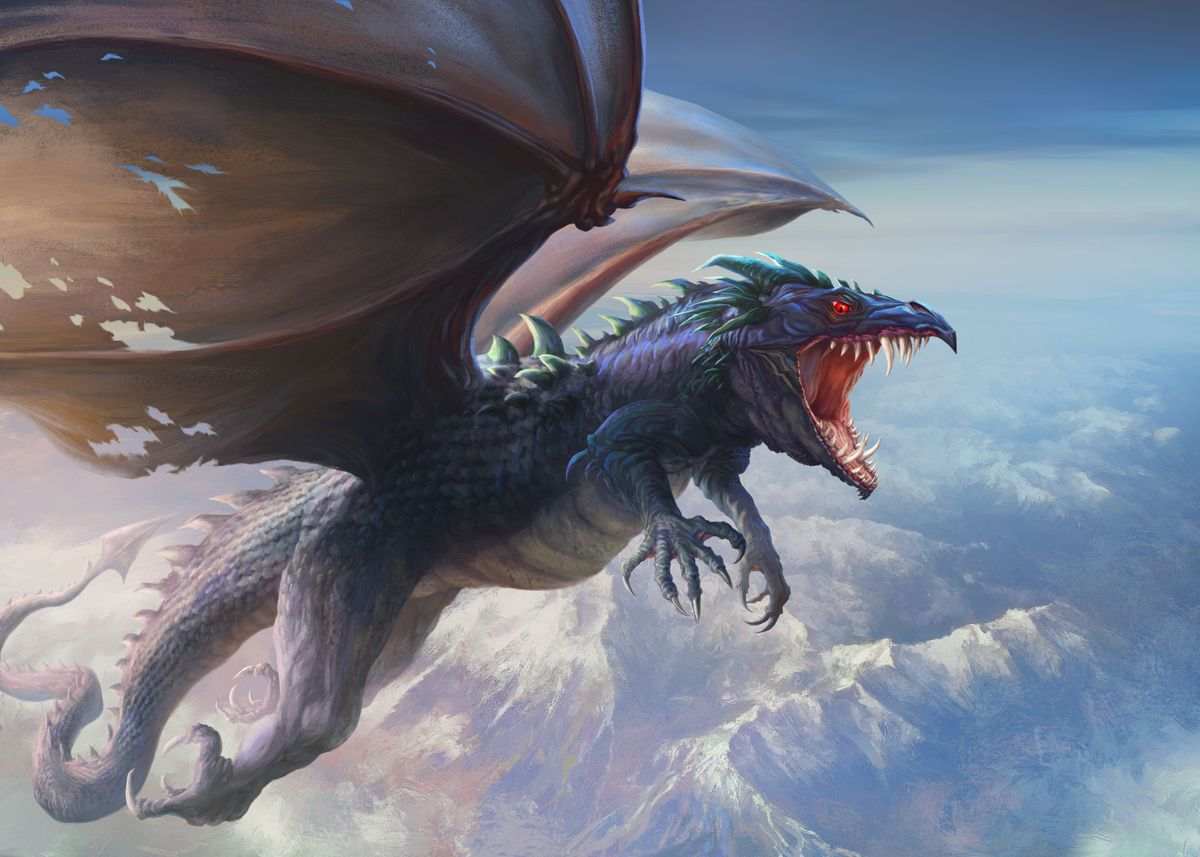The world is replete legendary creatures, each its own unique charm and mystique. Among these fantastical beings, the Wawel Dragon stands tall as an iconic figure in Polish folklore. This fire-breathing beast, whose lair was the Wawel Hill in Krakow, has captured the imaginations of generations, leaving behind a legacy that transcends time and place. As we delve into the riveting tale of the Wawel Dragon, we will explore the origins of this legendary creature, its significance in Polish culture, and the enduring lessons it imparts.
Discover the secrets behind the rich cultures of the Aymaraes, the Nuckelavee, the Gancanagh, the Kazakh, the Sami People, the Ainu of Japan, the Adivasi, the Akha People and many more on AmplifyGlobe.
The Birth of The Wawel Dragon
Legends often blur the lines between myth and reality, and the story of the Wawel Dragon is no exception. It is said to have dwelled in the caves beneath Wawel Hill, situated on the banks of the Vistula River in the heart of Krakow, Poland. The very mention of the dragon’s name conjures images of a colossal, menacing beast that could spew fire a mere breath.

The earliest written accounts of the Wawel Dragon date back to the 12th century, but its roots trace even further into the annals of time through oral tradition. The legend gained widespread recognition and popularity due to the works of chroniclers and poets like Wincenty Kadlubek, who chronicled the story in the 13th century.
The Wawel Dragon’s Reign of Terror
The tale of the Wawel Dragon revolves around a menacing creature that terrorized the city of Krakow and its inhabitants. The dragon’s lair, a dark and foreboding cave beneath Wawel Hill, served as a backdrop for its nefarious activities. The dragon’s insatiable appetite for livestock and even human sacrifices struck fear into the hearts of the people.
As many legends, the Wawel Dragon presented a seemingly insurmountable challenge for the beleaguered city. Its fiery breath and formidable size made it a daunting adversary. The dragon’s reign of terror continued unabated until a brave hero emerged, determined to confront this menace head-on.
The Heroic Quest of The Wawel Dragon
In the rich tapestry of folklore, heroes often rise from the unlikeliest of circumstances. In the case of the Wawel Dragon, it was a humble shoemaker’s apprentice named Skuba, later known as Krakus, who took up the mantle of the city’s savior.
The heroic narrative is enriched details of Krakus’s cunning. Armed a clever ruse and a strategy involving a ram stuffed sulfur, he set out to defeat the dragon. The unsuspecting dragon devoured the bait, causing it to belch flames that consumed it from the inside. With the dragon vanquished, Krakow was free from the shadow of its reign of terror.
The Triumph of Good Over Evil
The defeat of the Wawel Dragon is not just a story of valor; it symbolizes the triumph of good over evil. The dragon, its malevolent nature, represents the challenges and adversities that communities and individuals must face in life. Krakus, the unlikely hero, embodies the indomitable spirit of human courage and resourcefulness in the face of seemingly insurmountable odds.
The Wawel Dragon’s tale transcends its historical and geographical origins. It offers valuable life lessons that resonate people of all ages and cultures. It serves as a timeless reminder that even in the darkest of times, the human spirit can rise to the occasion and conquer the most formidable of adversaries.
The Cultural Significance of The Wawel Dragon
The Wawel Dragon is not merely a creature of myth; it is an integral part of Polish culture and history. Its legend has been immortalized in various art forms, from literature to visual arts and music. One of the most iconic representations of the dragon is the bronze statue located at the foot of Wawel Hill. This statue, created by the sculptor Bronislaw Chromy, has become an enduring symbol of Krakow and a must-see attraction for visitors from around the world.
Moreover, the legend of the Wawel Dragon has found its way into modern popular culture. It serves as a source of inspiration for contemporary artists, writers, and filmmakers. Its presence is felt not only in Poland but also in international art and entertainment.
Lessons from The Wawel Dragon’s Lair
The legend of the Wawel Dragon imparts several timeless lessons that continue to resonate us:
1. Courage in the Face of Adversity
Krakus, the shoemaker’s apprentice, exemplifies the power of courage and determination when confronting life’s challenges. His bravery in the face of the fearsome dragon serves as a reminder that we can overcome even the most daunting obstacles through determination and resourcefulness.
2. The Value of Strategy
Krakus’s clever strategy, involving the sulfur-filled ram, underscores the importance of strategic thinking and problem-solving. It teaches us that intelligence and ingenuity can be potent tools in overcoming seemingly unbeatable foes.
3. The Triumph of Goodness
The defeat of the Wawel Dragon symbolizes the ultimate victory of goodness over evil. This timeless theme reminds us that, no matter how dark the circumstances, acts of heroism and virtue can prevail.
4. Cultural Heritage and Identity of The Wawel Dragon
The Wawel Dragon is an integral part of Poland’s cultural heritage and identity. Its legend connects generations and fosters a sense of belonging and shared history. It serves as a testament to the enduring power of storytelling and folklore in shaping a nation’s identity.
Conclusion
The Wawel Dragon, its fiery breath and imposing presence, may be a creature of myth, but its legacy is undeniably real. It has transcended time and place to become an enduring symbol of courage, strategy, and the triumph of good over evil. As we delve into the legend of the Wawel Dragon, we not only uncover a captivating story but also uncover valuable life lessons that continue to inspire and resonate people around the world. In its fiery tale, we find the timeless power of the human spirit and the enduring magic of storytelling.